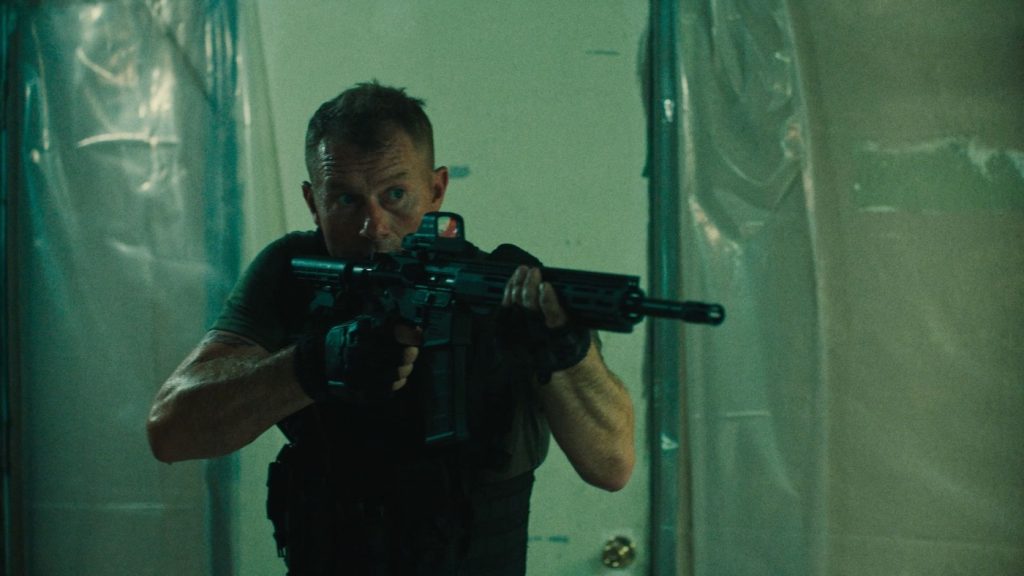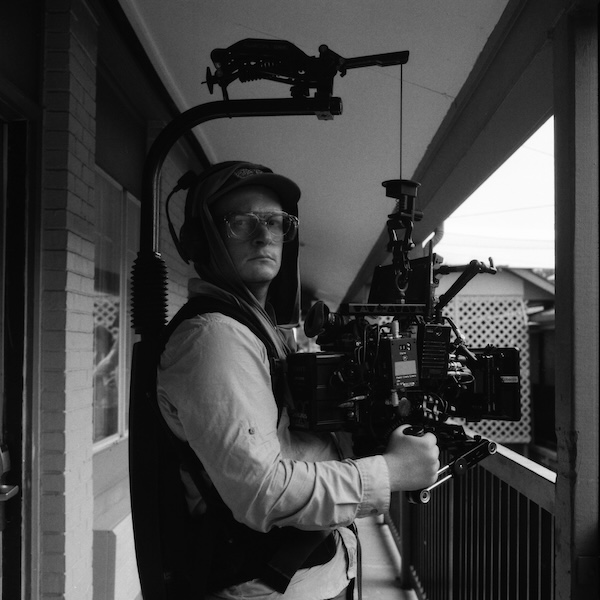“King Ivory” Cinematographer Will Stone Illuminates John Swab’s Fentanyl Crime Drama
“This was a very important script for him,” says cinematographer Will Stone about writer-director John Swab and his latest project, King Ivory, which debuted at the Venice Film Festival.
Born in Tulsa, Oklahoma, Swab is a recovering drug addict, and with his feature film Body Brokers (2021), he took first-hand accounts of time he spent in drug rehabilitation centers to deliver a visually gritty narrative about scammers profiting off keeping people in recovery. King Ivory, which stars Ben Foster (Hell or High Water), Melissa, Leo (The Fighter), and Michael Mando (Breaking Bad), continues the director’s cinematic war on drugs by shining a light on the fentanyl drug trade and the effects it has on communities.
“It’s a very personal story for him,” admits Stone, who’s collaborated with Swab on four films now. “Some of the dark things that happen in this movie are things he experienced himself. And to John’s credit, it’s good he can tell his story and try to use it to help create awareness.”
In photographing the powerful and raw imagery, Stone wanted it to “feel real and naturalistic,” approaching composition, frame, and lighting akin to shooting a documentary. Below, the cinematographer unravels what went into creating the visceral visual language and how Tulsa, where the film was shot, influenced the decision-making.

How did you and Swab prep for the movie?
John and I have a really good shorthand. We see things very similarly, and all it takes on set we know something’s working or not is a little bit of eye contact or a look. With King Ivory, what we did was make this little cheat sheet for our general approach to the film. It was mainly how we treated movement, color, light, and point of view. When do we show contrast or similarities and differences in character? Because the story follows five or six different storylines, it was important to kind of have consistency throughout them or create contrast when needed.
How did you want to approach the imagery of those storylines?
Our biggest thing was we wanted it to feel raw, real docu-style. We didn’t want the audience to experience anything before our characters would experience it, so it was more about grounding ourselves within the characters’ lives and experiencing things with them for the first time. So, we were trying to be more reactive with the camera rather than proactive. Then it was about how intimate we were with each character, and each character comes from a totally different walk of life. And I think, and just being true to that person and as much as possible in their journey.

King Ivory was shot in Tulsa, Oklahoma, which is a pretty interesting place. What was your reaction to the city?
I grew up two and a half hours away from Tulsa in Missouri so I’m from a similar kind of region. But Tulsa is a bit of a different place. There’s a huge dichotomy in wealth distribution there. It’s like there’s old oil money, and some of the most massive, huge estates and houses in these neighborhoods are really beautiful. And then, if you go to a certain part of town, it’s almost like a third-world country. It can be pretty bad.
Did anything unexpected happen while shooting in Tulsa?
Because John knew the city well enough, he thought we could probably get some shots of people actually doing stuff. To make it a very real part of the story. So we took a camera and went to a gas station a block from where we were filming. And there were probably like five for six people in the parking lot shooting up and smoking meth. I think people kind of don’t realize how much it is happening and where it’s happening and how it’s literally all around them. And so we wanted to show that and lean into that in terms of Tulsa.
That’s intense. Since you’re almost guerilla shooting sometimes, what kind of crew did you and John want to surround yourself with?
We were lucky to have a good crew. We had people who were down to roll the punches because this was not the kind of shoot that was going to be easy. It was going to be a grind, and it was also in the summer, so it was going to be super-hot. There were a lot of indoor locations with no AC, which can be brutal and difficult. So, being able to make it through that, I am really proud of the people we worked with.


One of those people was production designer Miles Rogoish. How was your collaboration with him?
Miles is great, and he’s good friends with John. The art department deserves a lot of credit because they pulled off countless overnights turning around certain locations. One day, it was a farmhouse, and the next, it was a drug prep room. They did such an excellent job.
Did you have an overall approach to lighting, or was it based more on the location?
We’re trying to replicate natural light or enhance what was in a certain area. I don’t know the exact number of locations, but it had been in the 50s, almost 60 locations. We only shot for 23 or 24 days, so that means we’re doing a company move every day or doing three on some days. So it was very much about what we can utilize at the location. What’s our starting point? And then, leaning into the docu-style really helped us out. So, I was just trying to naturally replicate what you would find in these environments. If it’s fluorescent lights, then we augment that or bring in some negative film to create some contrast, and so on.
Near the beginning of the story, there’s a scene in a Mexican farmhouse that has a different tone. How did you approach the lighting to create the moody atmosphere?
We found this summer house in Tulsa. It’s very small and has a tiny window. So we pushed a streak of sunlight through the window and then used skip bounces to fill people’s faces and make it feel like the sun was bouncing around off the floor inside. We wanted to make it as true to what it would be and allow the actors to walk in and out of light. The lighting was meant not to be perfect.
How did you want to approach lighting the climactic shootout sequence?
That was a pretty intense scene. We’re in a motel with this big, open center vestibule courtyard area. We decided to shoot it over two days, and we knew there was going to be hard light sneaking in at all these different angles, so it would be hard to match because we needed to shoot in a certain order for stunts. So we covered the entire courtyard with silks and had this nice soft light the whole time.
Did you have to jump through any resource hoops to augment the courtyard lighting?
When we were scouting the courtyard, I knew we needed about 20 silks to cover it, but I didn’t even want to ask Sam Baker, our key grip, because I didn’t think we had the guys or the silks even to do it. But he came over and asked, ‘Do you want me to cover this with silks?’ And I was like, ‘Do you think you can?” He said he could figure it out, and they ended up sourcing them from around town and brought some in from Oklahoma City overnight to pull it off. It ended up making that scene so much better.
It’s unreal how often a key grip or gaffer can save a scene by MacGyver-ing the nearly impossible.
Sam and his guys worked really hard to make that happen because we didn’t necessarily have those resources. Everyone was such a team player, bringing their own ideas and making sure we stayed true to what felt natural and real. Pulling stuff off like that really helps make it go a lot smoother.
After working on a project that explores drug issues, what is your reaction, and what are you hoping audiences will take away?
It was pretty hard because you obviously hear many stories about it. But then, being there and actually seeing it is totally different. And then, where I live in Los Angeles, I feel like it’s worsening. Even in my hometown in Missouri, you can see people that are not okay. And it’s really sad. Drugs like fentanyl are so ingrained in our society that it almost feels hard to break away from it. But I’m hoping this film is, I wouldn’t say, a wake-up call, but I would say, I hope it hits people hard and makes them realize how it could be anyone that they know using and that they need help.
King Ivory made its debut at the Venice Film Festival.



